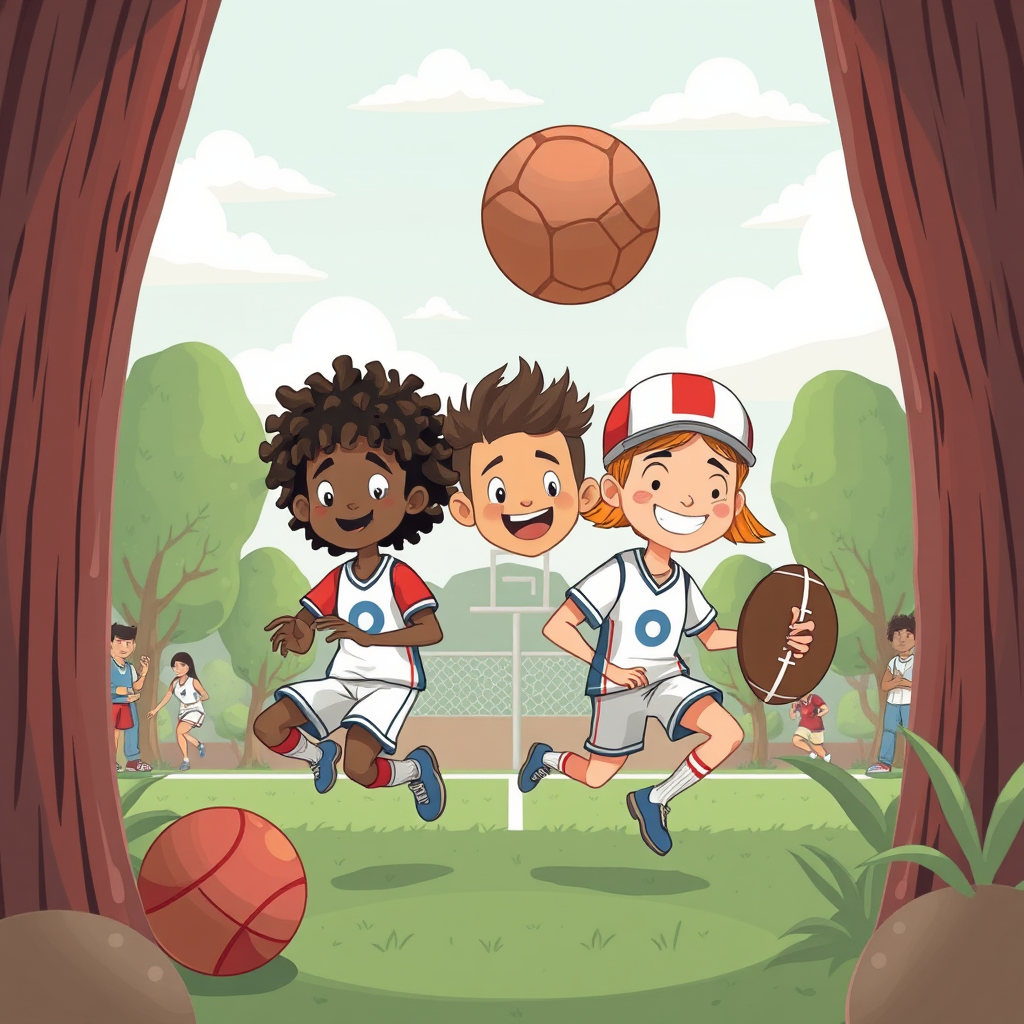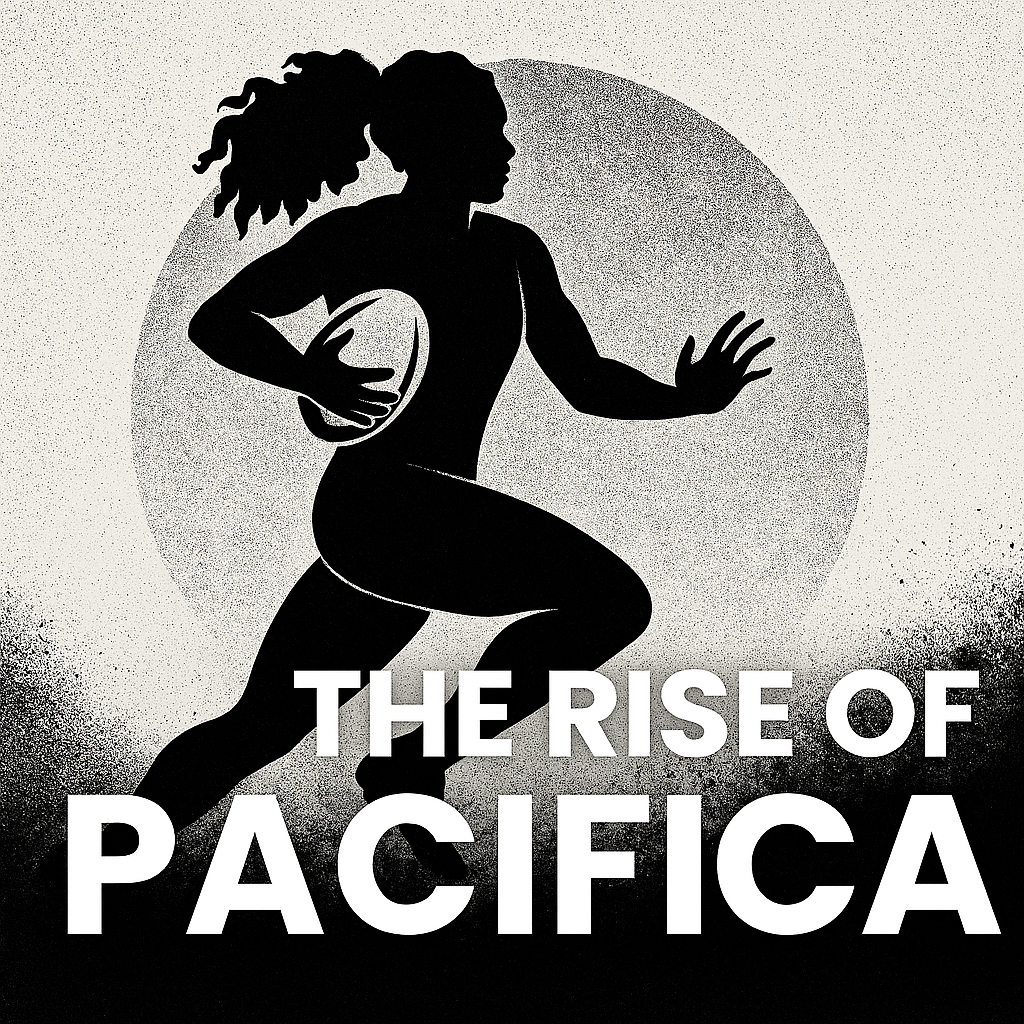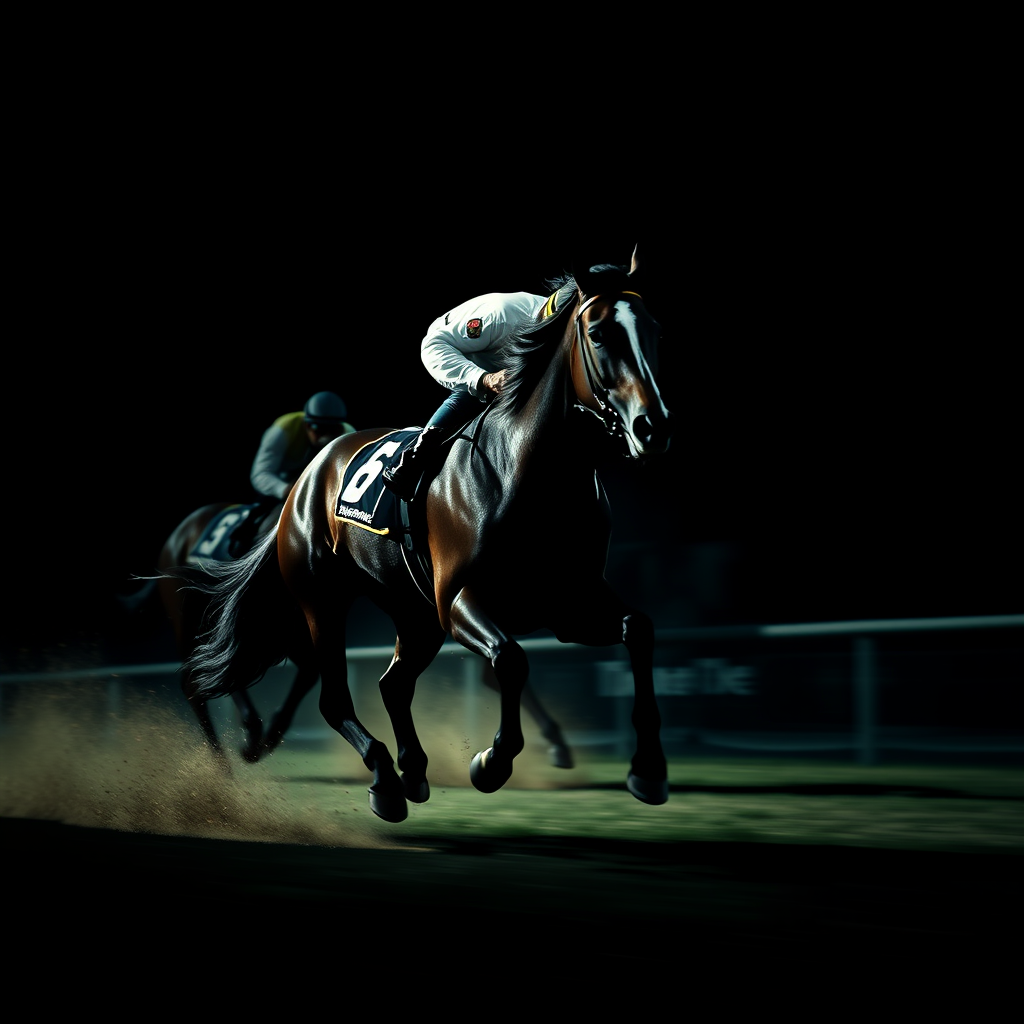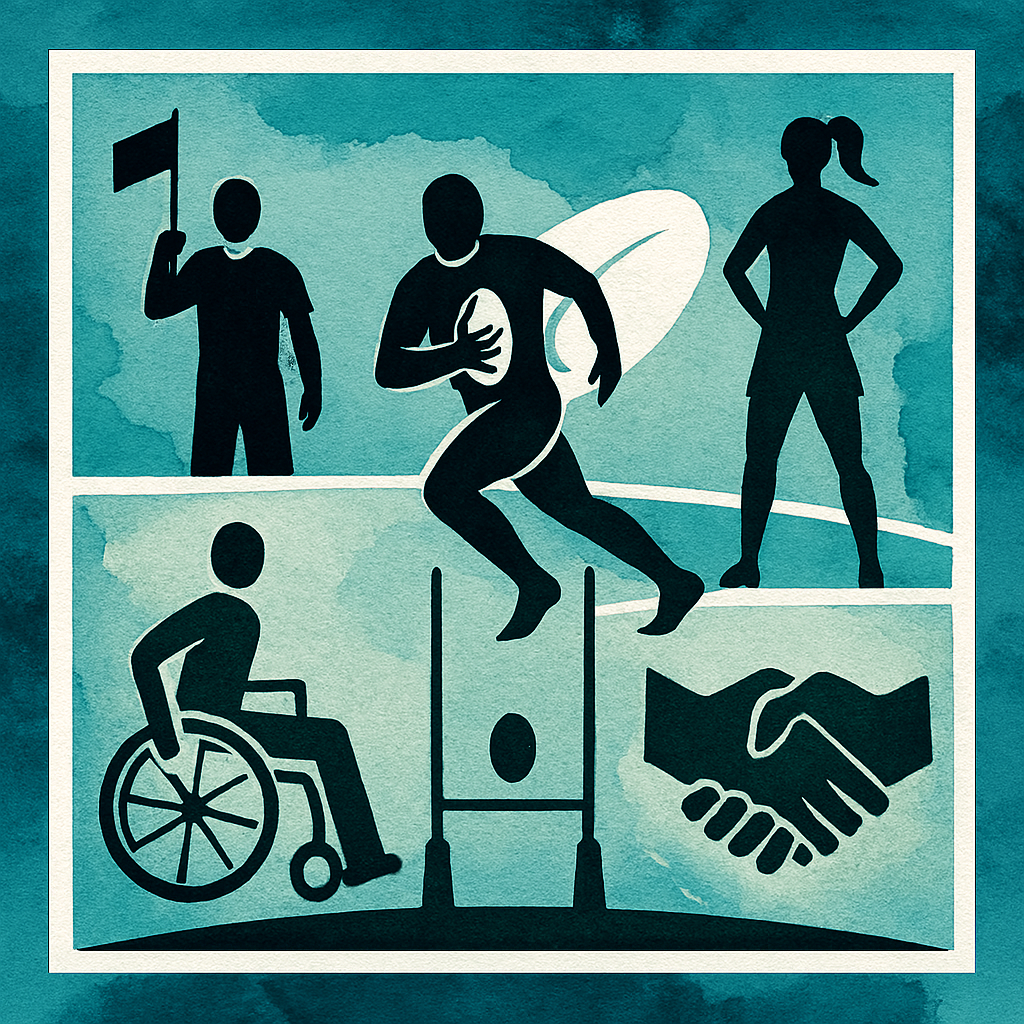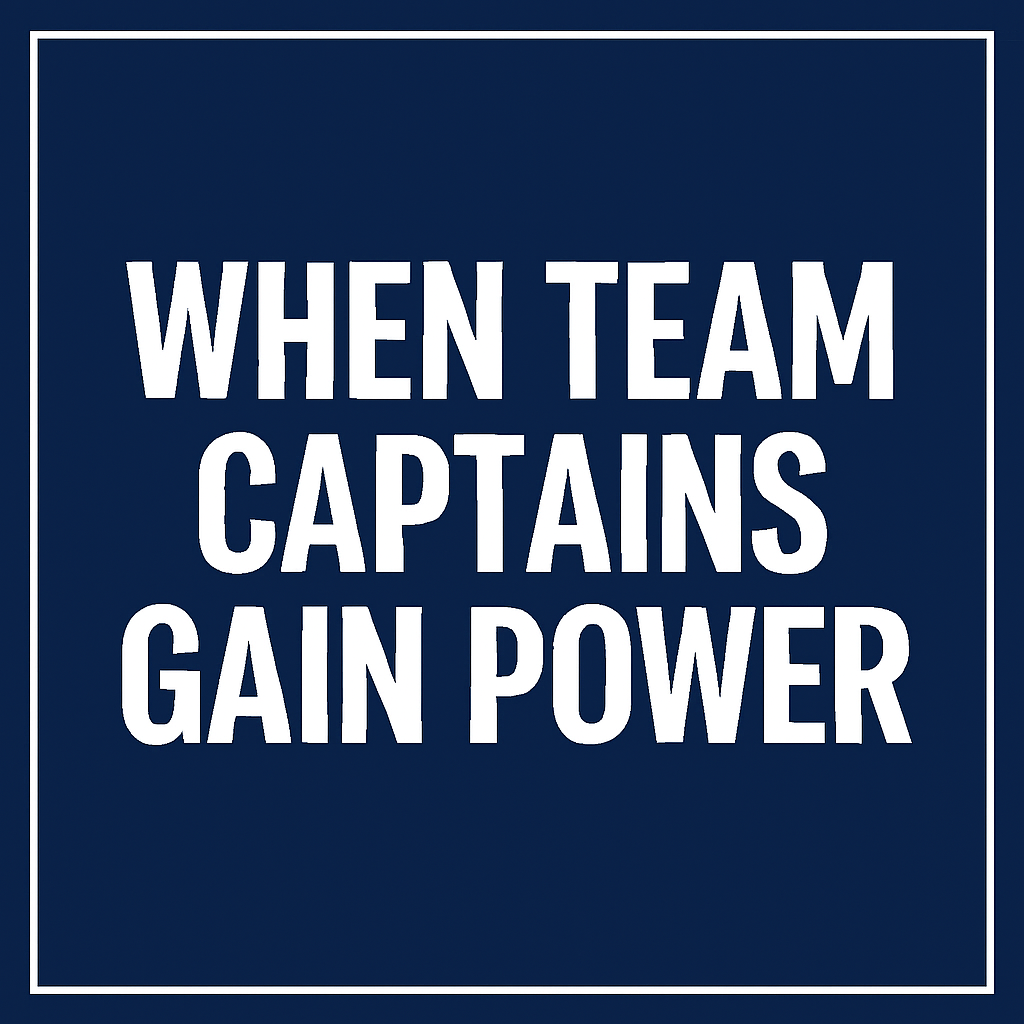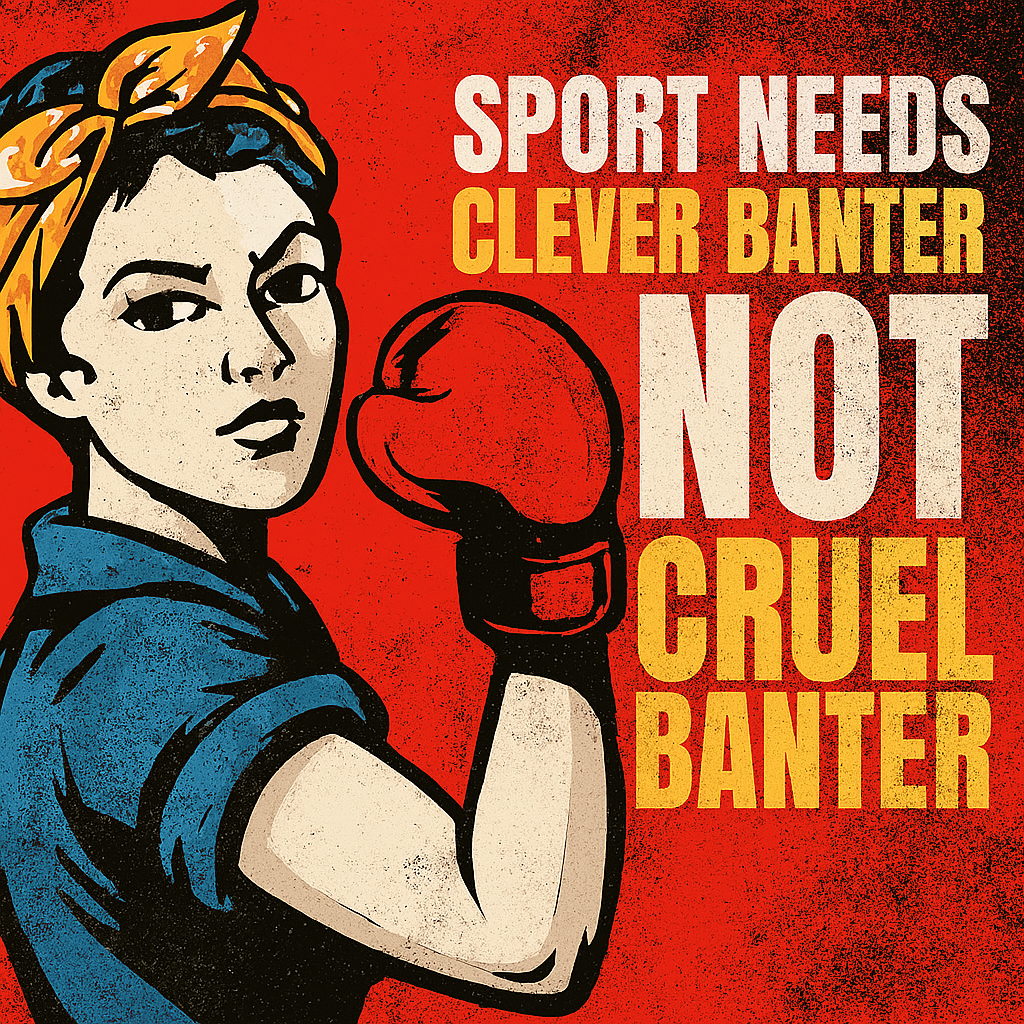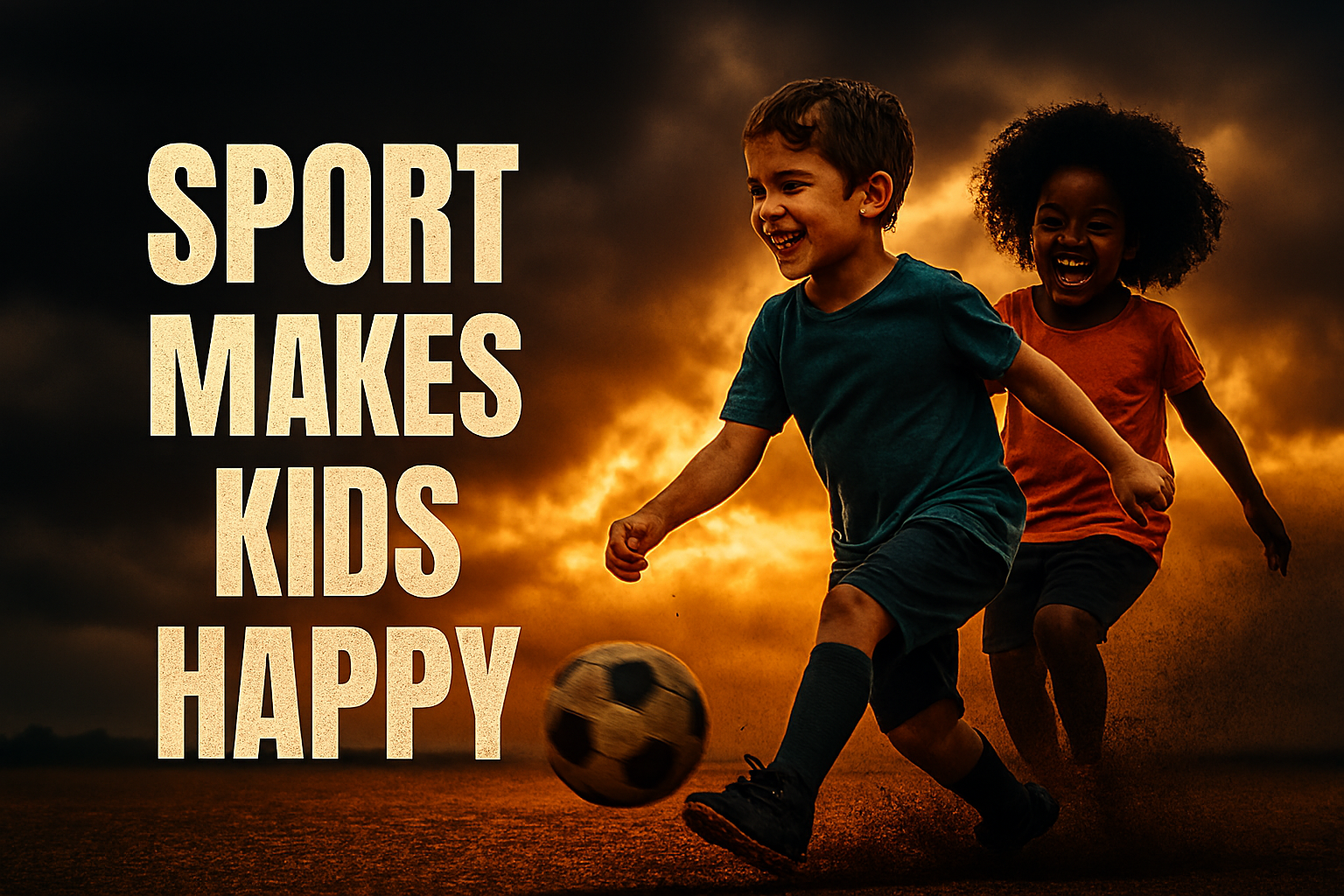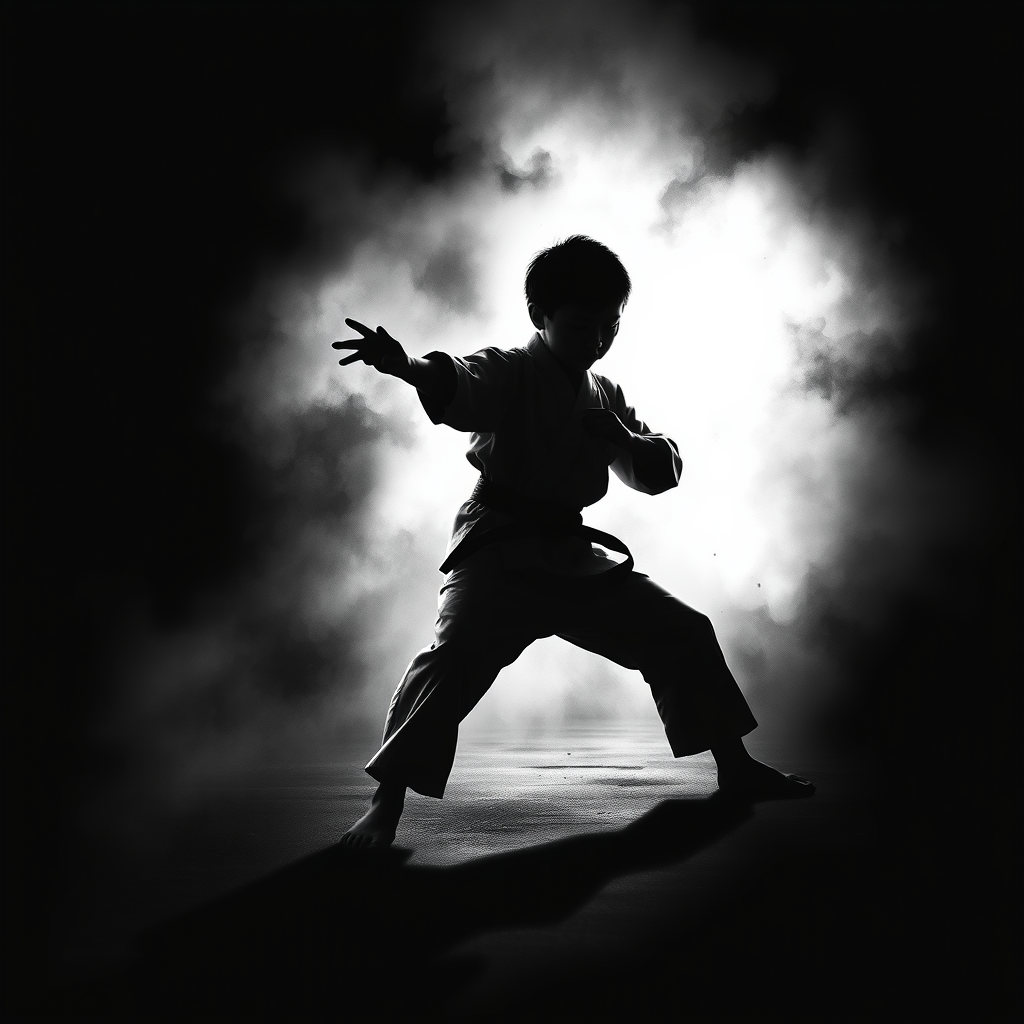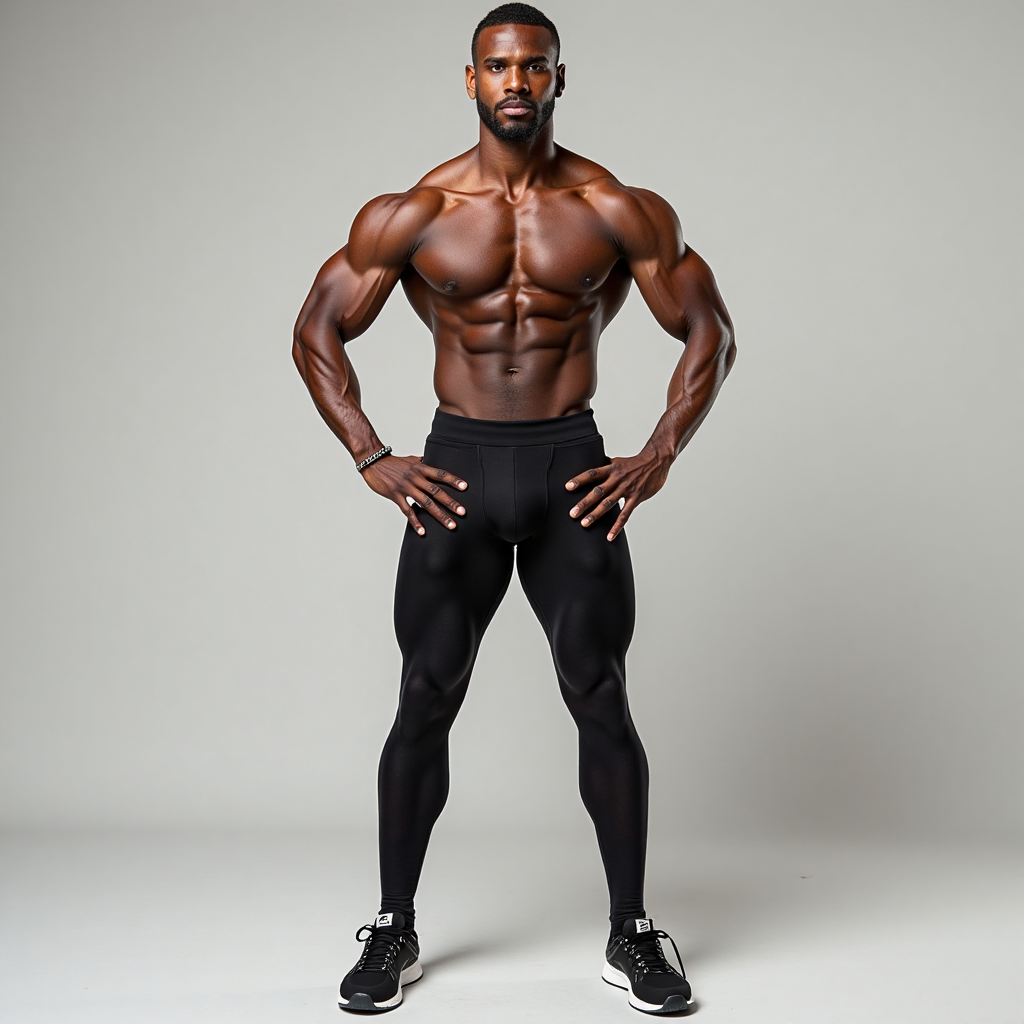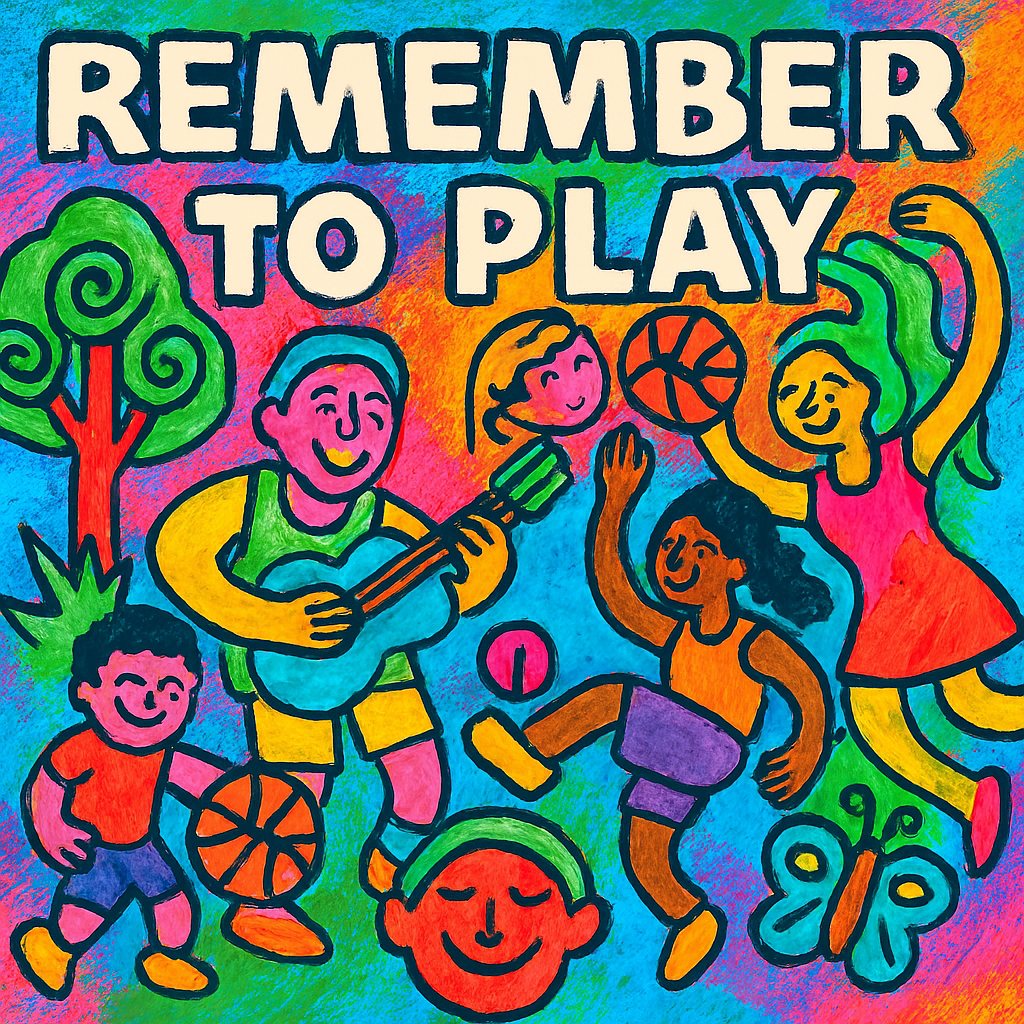Sport Naivety – The Silly Paradox Of Play
Why Can Sport Sometimes Be So Naive And Silly is a question often asked. Sport is often framed as a universal good. It is celebrated for its ability to unite people, build character, and showcase human potential. From schoolyards to stadiums, it promises fairness, discipline, and joy. But beneath this optimism lies a quieter contradiction. Sport can also be startlingly naive. It simplifies complex identities, glorifies pain, and overlooks the systems that shape who gets to play and who gets seen.
This naivety is not rooted in ignorance. It is embedded in the symbolic structure of sport itself. It emerges in the way sport tells stories, rewards behavior, and defines success. It appears in the belief that effort always leads to reward. It surfaces in the assumption that rules are neutral and that outcomes are earned. It hides in the silence around grief, exclusion, and failure. It thrives in the commodification of athletes and the erasure of history.
Sport, for all its beauty, can be blind to its own contradictions. It can celebrate resilience while denying rest. It can claim inclusion while rewarding conformity. It can demand emotional control while punishing vulnerability. It can rush childhood and discard aging bodies. It can flatten character into archetypes of good and bad. It can romanticize unity while masking division.
It can treat emotion as distraction and failure as taboo.
Sport Sometimes Be So Naive
THE ILLUSION OF FAIRNESS – WHEN RULES FEEL JUST BUT AREN’T
Sport is built on the idea of fairness. The rules are visible, the field is symmetrical, and the best player is supposed to win. But fairness in sport is often more aesthetic than actual. The appearance of equality masks deep structural imbalances. Access to coaching, equipment, and opportunity varies widely across regions and communities. Referees are human and subject to unconscious bias. Appeals processes exist but are often expensive and inaccessible to many. The visual symmetry of a court or pitch does not guarantee justice. Athletes from wealthier backgrounds frequently receive better training, nutrition, and medical support. Sponsorships tend to favor marketable personalities, not necessarily the most skilled or disciplined.
Media coverage amplifies certain narratives while silencing others. Even the rules themselves can reflect cultural bias, rewarding certain styles of play over others. What is considered unsportsmanlike in one context may be celebrated in another. The illusion of fairness is reinforced by repetition and ritual. Uniforms, scoreboards, and ceremonies suggest order, but they do not erase inequality. The myth of the level playing field persists because it is emotionally satisfying. It allows fans to believe that sport is pure. But purity is a performance, not a guarantee. Fairness must be interrogated, not assumed.
| Element of Fairness | Surface Appearance | Hidden Bias | Impact |
|---|---|---|---|
| Uniform rules | Equal for all | Context-blind | High |
| Refereeing | Neutral | Subjective | Medium |
| Appeals process | Available | Costly | High |
| Equipment standards | Regulated | Unequal access | High |
The idea that sport rewards effort alone is comforting but incomplete. It ignores the scaffolding behind every victory. It erases the invisible labor of families, communities, and institutions. It overlooks the uneven terrain that some athletes must cross just to reach the starting line. When fairness is treated as a given, sport becomes blind to its own architecture. It stops asking who built the rules and who benefits from their enforcement. It stops noticing who is missing from the field. The illusion of fairness is not just symbolic—it is systemic. It shapes how talent is recognized, how stories are told, and how legacies are built.
It allows injustice to hide in plain sight. Sport does not need to abandon fairness, but it must redefine it. True fairness requires context, transparency, and accountability. It demands that we look beyond the scoreboard. It asks us to see the game behind the game. Only then can sport begin to shed its most persistent naivety.

THE GLORIFICATION OF PAIN – WHEN SUFFERING IS CELEBRATED
Sport often celebrates pain as proof of commitment. Athletes are praised for playing through injury, pushing past exhaustion, and sacrificing comfort for victory. This glorification creates a culture where suffering becomes a badge of honor. It teaches young players that pain is part of the price of greatness. But this narrative can be harmful. It normalizes self-neglect and discourages rest.
It turns injury into spectacle and recovery into weakness. Athletes are expected to bounce back quickly, regardless of long-term consequences. The emotional toll of constant physical strain is rarely acknowledged. Mental fatigue is dismissed as lack of toughness. Coaches and fans often reward grit over safety. The media amplifies stories of heroic endurance while ignoring stories of burnout. Pain becomes currency in the economy of sport. It is traded for applause, contracts, and legacy. But the cost is high.
| Type of Pain | Public Perception | Long-Term Risk |
|---|---|---|
| Physical injury | Heroic | High |
| Mental fatigue | Invisible | High |
| Emotional stress | Weakness | Severe |
| Burnout | Temporary | Often ignored |
The glorification of pain also distorts the meaning of resilience. True resilience includes rest, reflection, and recovery. It requires boundaries, not just endurance. When sport equates resilience with suffering, it loses its emotional intelligence. It teaches athletes to override their own signals. It punishes vulnerability and rewards silence. This culture can lead to chronic injury, emotional collapse, and identity loss. Athletes may retire broken, both physically and mentally. They may struggle to reconnect with their bodies outside of performance. Sport must learn to honor healing as much as hustle. It must redefine strength to include softness. Only then can it move beyond its most dangerous naivety.
THE SIMPLIFICATION OF CHARACTER – GOOD SPORT VS BAD SPORT
Sport often reduces athletes to moral archetypes. The “good sport” is humble, gracious, and obedient. The “bad sport” is emotional, assertive, or rebellious. These labels ignore complexity. They flatten personality into performance. Athletes are expected to behave according to scripted roles. Deviations are punished with criticism or exclusion. Emotion is often seen as weakness or arrogance. Silence is praised as discipline, even when it hides distress. Assertiveness is celebrated in winners but condemned in dissenters.
The simplification of character creates a narrow emotional vocabulary. It limits how athletes express themselves. It rewards conformity over authenticity. This dynamic is especially harsh for athletes from marginalized backgrounds. Cultural expression is often misread as aggression. Passion is mistaken for disrespect. The result is a sport culture that polices identity.
| Trait | Seen as Good | Seen as Bad | Context Matters |
|---|---|---|---|
| Confidence | Yes | Yes | Always |
| Emotion | Sometimes | Often | Yes |
| Assertiveness | Yes | Yes | Yes |
| Silence | Yes | No | Depends |
Character in sport is shaped by context, pressure, and culture. It cannot be reduced to binary categories. Athletes are complex humans navigating intense environments. They deserve space to be multidimensional. When sport simplifies character, it loses its emotional depth. It turns players into symbols rather than people. It teaches fans to judge rather than understand. This naivety limits the transformative power of sport. It prevents empathy and reinforces stereotypes. Sport must learn to embrace emotional diversity. It must allow athletes to be flawed, expressive, and evolving. Only then can it reflect the full spectrum of human experience.
THE BLINDNESS TO SYSTEMS – INDIVIDUAL HEROES IN A STRUCTURAL GAME
Sport loves individual stories. The underdog who rises. The champion who overcomes. These narratives are emotionally powerful but structurally misleading. They ignore the systems that shape access, opportunity, and visibility. Funding models determine who gets to train. Governance rules decide who qualifies. Media bias influences who becomes a household name. The myth of individual triumph erases collective labor. It hides the scaffolding behind every success. Athletes do not rise alone. They are supported by families, communities, and institutions. When sport focuses only on personal grit, it becomes blind to its own architecture. It stops asking who built the ladder and who controls the gate. It stops noticing who is missing from the story.
| Systemic Factor | Visibility in Sport | Impact on Access |
|---|---|---|
| Funding models | Low | High |
| Media bias | Medium | High |
| Governance rules | Low | High |
| Regional access | Rarely discussed | High |
This blindness to systems also affects how failure is interpreted. Athletes who struggle are seen as lacking drive. But they may be navigating invisible barriers. They may be excluded by design, not by choice. Sport must learn to see beyond the scoreboard. It must interrogate its own infrastructure. It must recognize that talent is not enough. Opportunity is shaped by policy, geography, and economics. When sport ignores systems, it reinforces inequality. It rewards those already advantaged. It punishes those who resist the mold. True transformation requires structural awareness. Sport must learn to tell stories that include the scaffolding. Only then can it move beyond its most persistent illusions.
THE ROMANTICISM OF UNITY – WHEN SPORT IGNORES DIVISION
Sport is often described as a unifier. It brings people together across race, class, and nationality. Stadiums fill with strangers cheering for the same team. National anthems echo across arenas. But this unity can be superficial. It often masks deeper divisions. The spectacle of togetherness can distract from exclusion. Not everyone is welcomed equally into the world of sport. Some are priced out. Others are pushed out. Cultural norms, language barriers, and systemic bias shape who feels at home.
The image of unity becomes a performance. It is curated for television and branding. Behind the scenes, inequality persists. Players may stand side by side, but their paths to the field were not the same. Fans may chant in unison, but their lived realities diverge. The myth of unity is emotionally powerful but structurally fragile.
| Symbol of Unity | Public Meaning | Hidden Division |
|---|---|---|
| National anthem | Patriotism | Cultural erasure |
| Team jersey | Belonging | Branding |
| Victory parade | Celebration | Economic disparity |
| Medal ceremony | Achievement | Political tension |
Sport must learn to distinguish between symbolic unity and structural inclusion. True unity requires more than shared colors or synchronized chants. It demands equity in access, voice, and safety. It requires listening to those who feel excluded. It requires redesigning systems that reward sameness. When sport romanticizes unity without addressing division, it becomes naive. It tells a story that feels good but isn’t fully true. It comforts the majority while silencing the margins. Sport has the potential to be a space of real connection. But only if it is willing to confront its own fractures.
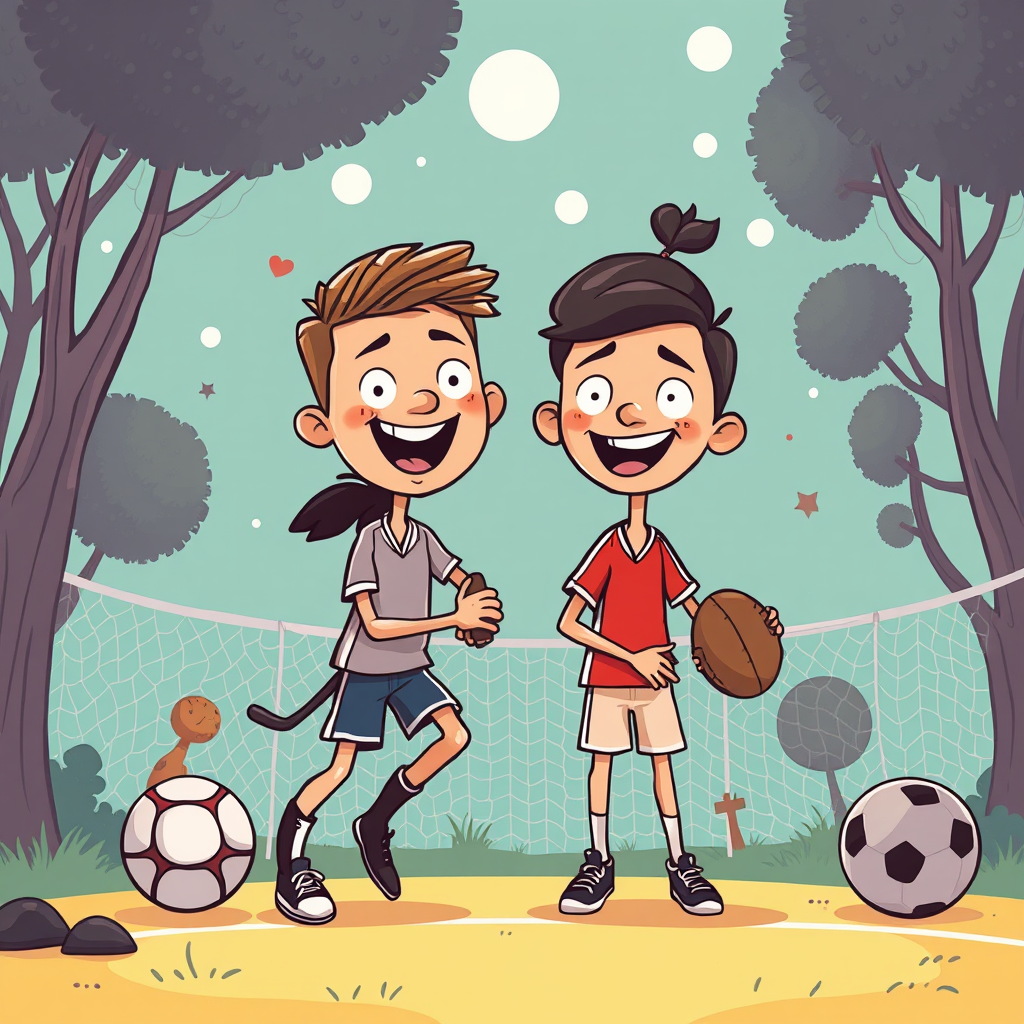
THE ERASURE OF HISTORY – WHEN SPORT FORGETS ITS PAST
Sport thrives on the present. It celebrates the next match, the next record, the next rising star. But in doing so, it often forgets its past. It overlooks the legacies of exclusion, exploitation, and resistance. Many sports were shaped by colonial histories. Others were built on segregation and gender bans.
These histories are not distant—they are embedded in rules, rituals, and institutions. When sport pretends to be apolitical, it erases the struggles that made participation possible. It forgets the athletes who broke barriers. It forgets the protests that changed policies. It forgets the communities that were excluded for decades. This erasure is not neutral. It shapes how we understand success. It shapes who gets remembered and who gets erased. It turns sport into a myth of progress without pain.
| Historical Layer | Commonly Ignored | Still Relevant |
|---|---|---|
| Colonial influence | Yes | Yes |
| Gender bans | Often | Yes |
| Racial segregation | Rarely discussed | Yes |
| Political boycotts | Minimally taught | Yes |
Remembering history is not about guilt. It is about context. It is about honoring the full story. It is about recognizing that every rule has a backstory. Every uniform has a lineage. Every league has a legacy. Sport must learn to carry its past with integrity. It must teach young athletes where the game came from. It must acknowledge the costs of inclusion. Only then can it move forward with clarity. Only then can it avoid the naivety of forgetting.
THE COMMODIFICATION OF IDENTITY – WHEN ATHLETES BECOME BRANDS
Modern sport turns athletes into brands. Their image, voice, and story are monetized. Sponsorships reward marketability, not just skill. Social media amplifies curated personas. This commodification can flatten identity. It turns people into products. It rewards consistency over complexity. Athletes are expected to be inspirational but not political. Relatable but not controversial. Visible but not too loud. Their personal lives become public property. Their struggles become marketing content. Their victories become corporate assets. This dynamic creates pressure to perform off the field as well as on it.
| Identity Element | Market Value | Personal Cost |
|---|---|---|
| Name | High | Medium |
| Voice | Medium | High |
| Story | High | High |
| Culture | High | Often erased |
The commodification of identity also limits authenticity. Athletes may feel trapped in their own brand. They may struggle to evolve publicly. They may fear backlash for showing vulnerability. Sport must learn to protect the person behind the persona. It must create space for complexity. It must value truth over polish. When sport treats identity as a product, it becomes naive. It forgets that people are not platforms. It forgets that stories are not slogans. It forgets that visibility without agency is not empowerment. True respect means allowing athletes to be more than their image.
THE OVEREXPOSURE OF YOUTH – WHEN CHILDHOOD ISN’T PROTECTED
Young athletes are often pushed into the spotlight before they are ready. Their talent becomes currency, and their childhood becomes a performance. Parents, coaches, and sponsors place expectations on children that mirror professional pressure. Training schedules replace play. Media attention amplifies their achievements but rarely protects their emotional development. The line between encouragement and exploitation becomes blurred. Children are praised for discipline but punished for fatigue. They are celebrated for winning but shamed for losing. Their bodies are treated as assets, not as growing organisms. Their identities are shaped by external validation. The joy of sport becomes conditional. It depends on results, rankings, and recognition. This dynamic can lead to burnout, anxiety, and identity confusion.
| Age Group | Common Pressure | Risk Level |
|---|---|---|
| Under 10 | Parental ambition | High |
| 10–14 | Media attention | High |
| 15–18 | Sponsorship deals | Severe |
| 18+ | Career decisions | Critical |
Sport must learn to protect childhood. It must create environments where play is prioritized over performance. It must recognize that development is nonlinear. It must allow children to fail without shame. It must teach emotional literacy alongside physical skill. When sport treats youth as a marketing opportunity, it becomes naive. It forgets that children are not miniature professionals. It forgets that growth requires freedom. It forgets that identity must be nurtured, not branded. True support means creating space for exploration, rest, and reflection. It means listening to young voices. It means valuing joy over medals. Only then can sport become a space of genuine development.
THE FETISHIZATION OF RESILIENCE – WHEN BOUNCING BACK IS MANDATORY
Resilience is one of sport’s most celebrated traits. Athletes are admired for bouncing back from injury, defeat, and personal loss. Comebacks are framed as heroic. But this fetishization can be cruel. It demands recovery without rest. It expects strength without softness. Athletes are praised for pushing through pain but rarely supported in healing. Mental health struggles are minimized. Emotional breakdowns are hidden. The narrative of resilience becomes a burden. It teaches athletes to override their own needs. It punishes vulnerability and rewards silence. It turns recovery into performance. It treats trauma as a stepping stone rather than a wound.
| Resilience Type | Public Expectation | Emotional Toll |
|---|---|---|
| Injury recovery | Fast | High |
| Mental health | Silent | Severe |
| Career setbacks | Heroic | High |
| Personal loss | Private | Deep |
True resilience includes boundaries, rest, and reflection. It requires emotional support, not just physical endurance. When sport equates resilience with suffering, it loses its emotional intelligence. It teaches fans to expect miracles. It teaches coaches to ignore warning signs. It teaches athletes to suppress their truth. This culture can lead to long-term damage. It can fracture identity and isolate individuals. Sport must learn to honor healing as much as hustle. It must redefine strength to include softness. It must create space for grief, doubt, and pause. Only then can it move beyond its most dangerous naivety.
THE SILENCING OF GRIEF – WHEN LOSS ISN’T ALLOWED
Athletes experience grief like anyone else. They lose teammates, family members, careers, and identities. But sport rarely makes space for mourning. Matches continue. Interviews resume. Training schedules remain unchanged. Grief is treated as a distraction. Emotional depth is sidelined. Athletes are expected to compartmentalize their pain. They are praised for composure but punished for tears. The silence around grief creates isolation. It teaches athletes to hide their sorrow. It turns vulnerability into liability. It erases the human behind the performance.
| Type of Grief | Sport’s Response | Needed Support |
|---|---|---|
| Death of loved one | Moment of silence | Long-term care |
| Career-ending injury | Retirement ceremony | Identity support |
| Team dissolution | Press release | Community rebuilding |
| Personal trauma | Silence | Therapy access |
Grief is not weakness. It is part of life. It shapes how we connect, reflect, and grow. Sport must learn to honor emotional transitions. It must create rituals that acknowledge loss. It must offer support beyond the spotlight. When sport silences grief, it becomes naive. It forgets that athletes are not machines. It forgets that performance cannot erase pain. It forgets that healing requires time, space, and care. True strength includes the ability to mourn. True leadership includes the courage to pause. Only then can sport reflect the full spectrum of human experience.
THE DISTORTION OF TIME – WHEN SPORT RUSHES EVERYTHING
Sport moves fast. Seasons change, careers peak, and retirements arrive abruptly. Athletes are expected to develop quickly, perform consistently, and exit gracefully. Time becomes compressed. Childhood is accelerated. Prime years are monetized. Decline is ignored. Retirement is treated as disappearance. The rhythm of life is replaced by the rhythm of competition. Athletes are rarely allowed to pause. Reflection is seen as indulgent. Transition is treated as weakness. The pace of sport creates emotional disorientation. It teaches athletes to measure life in wins and losses. It punishes those who slow down. It rewards urgency over sustainability.
| Time Phase | Sport’s Pace | Human Need |
|---|---|---|
| Youth | Accelerated | Exploration |
| Prime | Compressed | Stability |
| Decline | Ignored | Transition |
| Retirement | Abrupt | Reinvention |
This distortion of time affects identity. Athletes may struggle to define themselves outside of performance. They may feel lost when the schedule ends. They may fear irrelevance. Sport must learn to honor transitions. It must create rituals for reflection. It must support reinvention. When sport rushes everything, it becomes naive. It forgets that growth is cyclical. It forgets that endings deserve care. It forgets that time is not just a countdown. True wisdom includes pacing. True leadership includes pause. Only then can sport become a space of lifelong meaning.
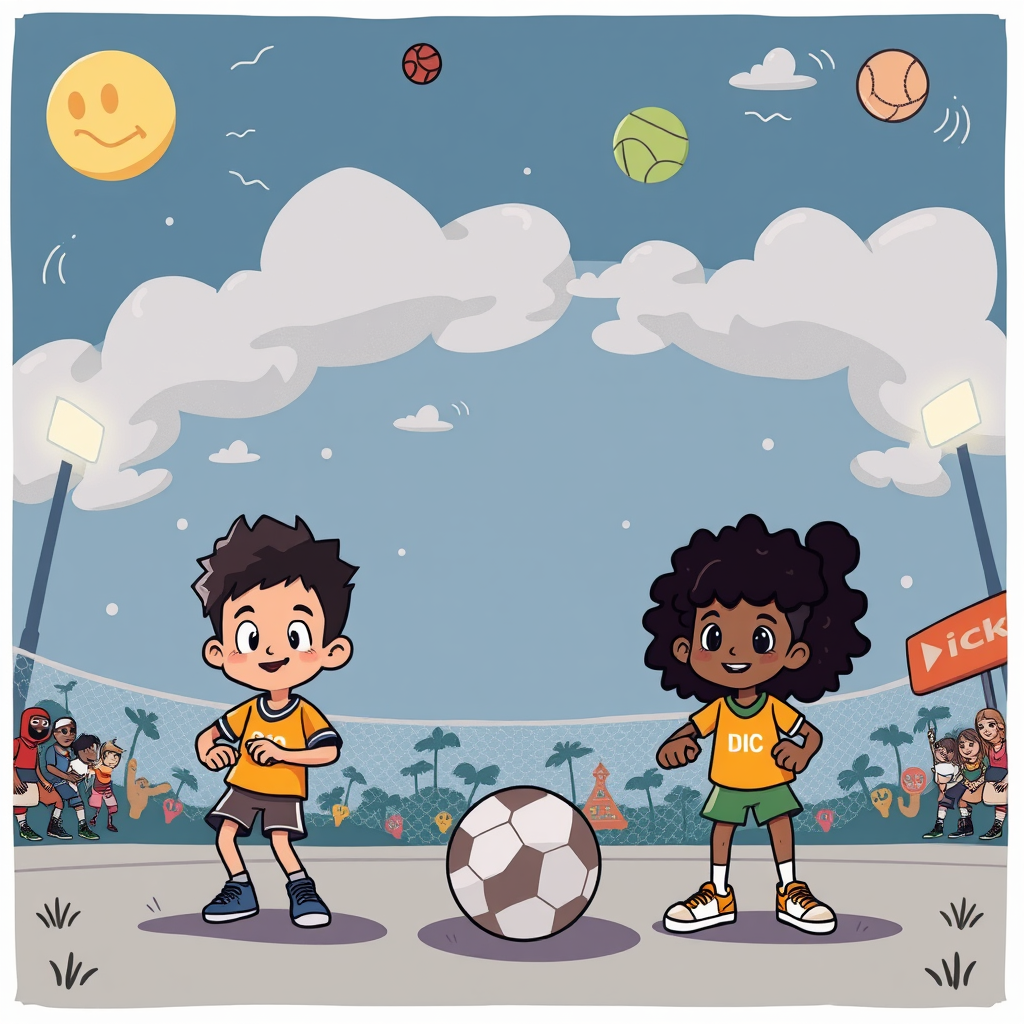
THE AVOIDANCE OF FAILURE – WHEN LOSING IS TABOO
Failure is part of sport. Every game has a loser. Every athlete faces defeat. But sport rarely embraces failure. Losing is treated as shameful. Mistakes are punished. Struggles are hidden. The culture of perfection creates fear. Athletes may avoid risk to protect reputation. Coaches may prioritize safety over experimentation. Fans may abandon teams after poor seasons. Media may ridicule rather than reflect. This avoidance of failure limits growth. It turns sport into a performance of invincibility. It erases the value of learning.
| Failure Type | Public Reaction | Growth Potential |
|---|---|---|
| Missed goal | Criticism | High |
| Injury | Sympathy | Medium |
| Mental lapse | Judgment | High |
| Team loss | Blame | High |
Failure is not the opposite of success. It is part of the process. It reveals gaps, invites reflection, and builds resilience. Sport must learn to normalize losing. It must teach athletes to fail with dignity. It must create space for experimentation. When sport treats failure as taboo, it becomes naive. It forgets that mastery includes mistakes. It forgets that courage includes risk. It forgets that progress includes setbacks. True excellence includes humility. True culture includes compassion. Only then can sport become a space of authentic development.
THE EXCLUSION OF DIFFERENCE – WHEN SPORT ISN’T FOR EVERYONE
Sport claims to be inclusive. It celebrates diversity in slogans and campaigns. But many are still left out. Para-athletes face infrastructure barriers. Neurodivergent players face coaching limitations. Cultural minorities face representation gaps. LGBTQ+ athletes face safety concerns. Inclusion is often symbolic, not structural. Uniforms may change, but policies remain rigid. Invitations may be extended, but environments remain hostile. The reward system favors conformity. Difference is tolerated but not embraced. This exclusion limits the potential of sport. It narrows the field of possibility.
| Group | Common Barrier | Needed Change |
|---|---|---|
| Para-athletes | Infrastructure | Universal design |
| Neurodivergent players | Coaching style | Adaptive methods |
| Cultural minorities | Representation | Leadership access |
| LGBTQ+ athletes | Safety | Policy reform |
Sport must move beyond decoration. It must redesign systems to support all bodies, minds, and identities. It must listen to those who feel unsafe. It must challenge norms that exclude. When sport treats inclusion as branding, it becomes naive. It forgets that equity requires redesign. It forgets that belonging requires transformation. It forgets that difference is not a threat. True inclusion is not about visibility. It is about voice, agency, and safety. Only then can sport become a space of collective empowerment.
THE DISMISSAL OF EMOTION – WHEN FEELINGS ARE UNWELCOME
Emotion is central to sport. Athletes feel joy, rage, fear, and grief. Fans cry, scream, and celebrate. But within the formal culture of sport, emotion is often dismissed. It is treated as a distraction. It is framed as weakness. Athletes are expected to be composed, focused, and controlled. Displays of emotion are scrutinized. Tears are seen as vulnerability. Anger is seen as aggression. Celebration is seen as arrogance. This dismissal creates emotional repression. It teaches athletes to suppress their truth. It teaches fans to judge rather than empathize. It creates a narrow emotional vocabulary.
| Emotion | Typical Reaction | Cultural Bias |
|---|---|---|
| Joy | Accepted | Conditional |
| Anger | Punished | Gendered |
| Grief | Ignored | Taboo |
| Vulnerability | Mocked | Often unsafe |
The dismissal of emotion also affects mental health. Athletes may struggle in silence. They may fear being seen as unstable. They may avoid seeking help. Sport must learn to embrace emotional expression. It must create space for feeling. It must teach emotional literacy. It must allow athletes to be whole. When sport treats emotion as unwelcome, it becomes naive. It forgets that performance is human. It forgets that strength includes softness. It forgets that connection requires honesty. True culture includes emotional depth. True leadership includes emotional fluency. Only then can sport become a space of healing and truth.
CONCLUSION – SEEING SPORT CLEARLY
Sport is beautiful. It is powerful, emotional, and transformative. But it is also flawed. It carries symbolic assumptions that distort reality. It simplifies identity, glorifies pain, and ignores systems. It romanticizes unity while masking division. It commodifies athletes and erases history. It rushes time and silences grief. It excludes difference and punishes emotion. These contradictions do not make sport evil. They make it human. They make it a mirror of society. But sport must learn to see itself clearly. It must interrogate its rituals, stories, and structures. It must move beyond aesthetic fairness. It must redefine resilience. It must honor complexity.
Sport must become emotionally intelligent. It must embrace vulnerability. It must protect youth. It must support transitions. It must normalize failure. It must redesign inclusion. It must carry its history with integrity. It must allow athletes to be more than brands. It must create space for grief, joy, and doubt. It must teach fans to listen. It must teach coaches to care. It must teach institutions to evolve. Naivety in sport is not inevitable. It is a choice. It is a habit. It can be unlearned. Sport has the potential to be wise. But only if it is willing to change.
JOIN THE DISCUSSION
What parts of sport do you think are most misunderstood? Where have you seen emotional depth or symbolic clarity in action? How can we redesign sport to reflect real fairness, real inclusion, and real healing?
#SportAndSymbolism #BeyondTheScoreboard #EmotionInAthletics #RedesignFairness #InclusivePlay #HealingThroughSport #UnmaskingUnity #AthletesAreHuman #SportWithoutNaivety
